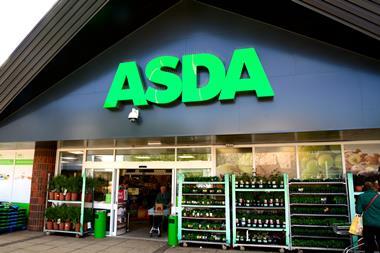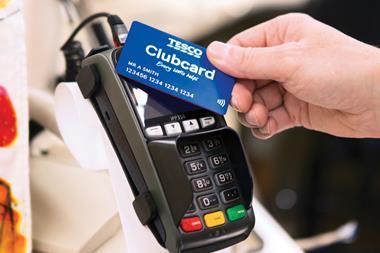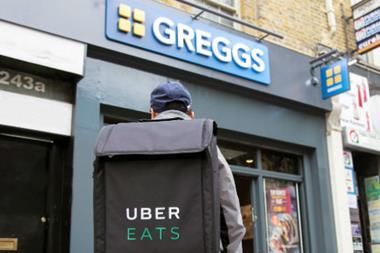Meat: is it time to go over the top?
Foot and mouth is yet another PR disaster for a meat chain still shadowed by BSE and CJD, so many trade figures have been puzzled by a low key response from the MLC to date. Marketing director Richard Lowe explains to Clive Beddall why he's been biding his time, and what he has up his sleeve
ust a few weeks into the job, and Peter Barr, new chairman of the Meat and Livestock Commission, has dived in at the political deep end.
Faced with FMD, not to mention the legacy of BSE, the former Hazlewood Foods chief has gone in front of a Commons committee and asked the government for a cool £25m to help restore the UK meat market to normality.
Barr's argument was to the point: "The industry needs a boost from the three Rs, consumer driven market recovery, demand chain restructuring, and reform of farm prices."
His plea comes as a host of other food and farm sectors scramble to head the queue for government cash to help them recover from the worst crisis to hit British farming in living memory.
But, significantly, Barr's request comes amid a clamour from certain sectors of the industry for the MLC to adopt a much more robust stance with consumers in promoting British meat during yet another crisis of confidence.
That's ironic, given the complaints that the MLC was "excessively aggressive" when it launched a series of pigmeat ads several months ago targeting allegedly dubious animal welfare methods in some competing countries.
But MLC insiders insist there is a "reassuring feeling of self-confidence" within the Commission that its current approach is correct.
And that, they explain, is to act from a position of knowledge and certainty at the right time rather than blunder in immediately with an ill-thought plan and be forced to change course as events unfold.
That's in sharp contrast to the way some other players have had to bend this way and that in the face of the conflicting merits of different pressure groups and the unforeseen circumstances caused by the unpredictable course of the disease.
But the MLC is now motoring. Initially, a four week £900,000 TV advertising campaign has gone on air, starting on Monday, to promote pork. This is being complemented with instore promotional activity featuring forequarter cuts specifically.
Why pork first? With pig slaughterings running at about 90% of normal and with the substantial export market for forequarter meat currently closed, there is both a need and an opportunity to add forequarter cuts to the consumer's repertoire in addition to traditional loin cuts.
With lamb, once the uncertainties caused by the cull are resolved and the potential oversupply due to the loss of export markets becomes clearer, there may well be a case for a return of the Harry Enfield campaign in tv and other media.
The different species need different strategies and approaches, not least because of the multiplicity of factors affecting demand and supply, including pricing and promotional dynamics.
The species suffered differently in the early weeks of the FMD crisis March. Household consumption of pork and bacon fell 17.1% and 18.7% in volume respectively, whereas lamb was down 10.4% and beef only 1.2%.
MLC insiders insist they will refuse to be panicked into kneejerk reactions to a situation so volatile it has been changing daily.
MLC marketing director Richard Lowe stresses the organisation has the high ground in terms of monitoring both consumer attitudes and retail figures. He says no other organisation has the breadth or depth of information which it is gathering on a weekly basis. In addition to consumer panels and other broad research it is taking data from TNS Superpanel which monitors the purchasing habits of 15,000 households on a continuous weekly basis and having special analysis applied to it.
Ally that to its understanding of and involvement with the whole of the supply chain, and Lowe insists MLC is best placed to play the lead role in restoring consumer confidence.
Only through an accurate correlation between consumer attitudes and retail sales will MLC be able confidently to initiate a recovery plan post-FMD and crucially convince retailers to embrace the plan with them.
Tactically, too, Lowe is playing an astute hand with funds that have to be carefully managed and husbanded in the current climate.
The whole issue has become highly politicised with a growing feeling that news about FMD has come through a filter of political and media manipulation. Consumers have also been given a distorted impression by emotive TV images.
Little wonder, therefore, that meat industry executives believe the consumer response is confused and contradictory and not always rational or logical. Which brings Lowe back to his point about taking the high ground in understanding consumers.
"That understanding of consumers what's going on in their minds, and what's happening in retail sales leads us to an action plan that we think best addresses the issues now and deals with restoring consumer confidence in the short to medium- term after supplies get back to normal."
And he adds that it's not just the amount of intelligence that leads MLC to claim that it "owns the territory" in understanding consumer attitudes, perceptions and motivations. It's the fact that the research is independent.
This, claims Lowe, gives him confidence to claim that consumer attitudes to red meat are remarkably robust despite the fact that meat sales are down.
In the week following the announcement of FMD, sales of red meat actually jumped 40% over the same period last year. This was obviously panic buying and much of the meat bought probably went straight into home freezers.
Some of the recent sales drop may be the result of that initial panic buying having since depressed the market, believes Lowe.
But there has undoubtedly been a drop in business which appears to be hitting the independent retail area most.
Lowe adds that research into consumer attitudes indicates concerns about health and safety only among a minority of consumers.
But, encouragingly, there has been no increasing or gathering momentum in decline in consumption the longer the issue has gone on.
"An analysis of the figures and consumer attitudes would indicate a short to medium- term dip of between 5% and 15%," estimates Lowe.
That diagnosis is one shared by the multiples, though all are agreed that in view of the random timing of promotional activity, it's difficult to draw precise comparisons.
Lowe belives that for the vast majority of consumers over 70% there are no short to medium-term issues.
The remainder of consumers can be divided between those who have ethical concerns and have been disturbed by the images on TV of slaughter and disposal, and those whose concerns revolve around the safety of meat.
It is this last group whom Lowe believes it is key to address and where he believes MLC has a job to do. The issues for him are both what to do and, more importantly, when to do it. And when it comes to addressing consumers concerned about meat safety, Lowe believes that the mass communication techniques of TV advertising, for example, may not be appropriate in all cases.
Plans are well developed, therefore, for careful media selection to reach this group in a way that addresses their concerns in an open, honest and transparent manner.
"They want information rather than need advertising," says Lowe. "Part of the reassurance job will be to demonstrate that the British meat industry is in control and that we speak with authority."
{{NEWS }}
Close menu
- Home
- Retail & Wholesale
-
Products & Suppliers
- Back to parent navigation item
- Products & Suppliers
-
Product Categories:
- Back to parent navigation item
- Product Categories:
- Alcoholic drinks
- Bakery
- Cereals & breakfast
- Cheese
- Chicken & poultry
- Chocolate
- Confectionery
- Crisps, nuts & snacks
- Dairy
- Fish
- Fresh produce
- Frozen
- Household
- Meat
- Own Label
- Sauces & condiments
- Seasonal
- Soft drinks
- Vaping
- Vegan & plant-based
- World foods
- Suppliers
- People
- Reports & Data
-
Topics A-Z
- Back to parent navigation item
- Topics A-Z
-
Popular topics:
- Back to parent navigation item
- Popular topics:
- Cost of living crisis
- Crime
- Deposit Return Schemes
- Finance
- Government & Regulation
- Health
- Inflation
- Loyalty
- Marketing
- Mergers & Acquisitions
- New Product Development
- Sourcing
- Supply chain
- Sustainability & environment
- Technology
- Ultra Processed Foods
- Vaping
- A-Z all topics
- Content by type:
- Events
- Subscribe now
Sign in to comment on this article
Not logged in before? Register for FREE guest access today.
You will be able to:
- Read more stories
- Receive daily newsletters
- Comment on stories
Advert













No comments yet